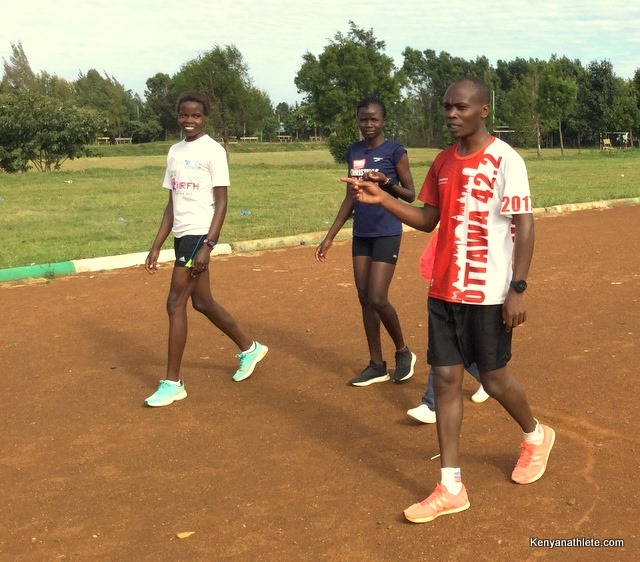
Duration and distances are the two main ways often used by Kenyan long-distance running coaches to issue weekly or monthly running training programs to their runners. It could be a one-hour or a 12km easy run; a 40-minute or a 7km jog; a two-hour or a 25km run; a 3hr or a 30 km long run, among many other options.
However, copying the training programs of elite runners may not work well since marathon training is dynamic depending on how the body responds to past workouts, the fitness level of the runner and the remaining time to one’s biggest running goal. That is why I design individual running training programs for the runners that I coach online.
The simplicity of Kenyan long-distance training
A typical Kenyan way of training is devoid of so many complications, like using heart rate monitors to pace workouts, among others. In fact, one of the interesting observations one will make about Kenyan runners when they visit their favourite high altitude training centres in Kenya is that the warm-up and the cool-down durations are at times determined by how far the runner lives from a track facility or some of the favourite spots for starting some road workouts. More interesting is that some runners even run without watches.
But, like an experienced cook who doesn’t need a spoon to measure ingredients while preparing their favourite dishes, Kenyan long distance runners and their coaches have perfected ways to measure their workouts. Some runners even pace 65-second 400m laps without the use of their watches.
It is these simple long-distance training methods that continue to put Kenyan runners as arguably the best in the world, with Kelvin Kiptum –who is allegedly self-coached- becoming one of the latest wonders at the 2023 London Marathon.
If training programs are based on distance alone, an easy run for one runner could be a hard run for another one. That is why in my individualized coaching programs, which is typical of other Kenyan coaches, I use “perceived feelings” more when designing my training programs – Jog, Easy, Moderate, and hard.
Here is how to understand them roughly.
Jogging is so close to your walking pace that you are hardly lifting your legs off the ground. Easy is when you are actually running but not straining in any way; it is that pace at which you are able to have a conversation but still keep running at it. Moderate is a relatively hard run, but that in which you can still reserve some energy for another faster gear. Hard is your race pace, or even faster, depending on the distance and type of workout.
Usually, I will be basing my workouts mostly on duration rather than distances in the early stages of training so that runners can be able to comfortably finish the workouts even if they feel the need to go slower. As long as they finish the minutes stated on the workout, the purpose of the workout is achieved.
So, as your personal running coach, what will be more important to me when checking out whether my programs were followed is not so much the distance or speed but the duration you took on your feet. A one-hour easy run could take some runners up to a distance of twelve kilometres, while others could hardly cover five kilometres.

As training progresses, there will be a need for runners to do some more race-specific training. Tempo Runs and other speed workouts would help the runners try and gauge the paces they are able to sustain and make some predictions for their planned races.
Bart Yasso’s famous 800m intervals training that has been used by some runners over time to estimate the time they are able to run a marathon comes to mind. According to the formula, the average time in minutes and seconds that you do in each of the ten 800m intervals will be the approximate time you will run a marathon in hours and minutes. For example, if you can do an average of 2 minutes and 30 seconds for each 800m interval, then your marathon time will be around 2hrs 30 minutes.
As training progresses, your perceived effort also changes.
Personally, I have found out that my distances change over time while going out for my usual 1hr 10 minutes morning runs. I tend to hit around 12 km when early on my training cycle and gradually reach up to 16 km as my body adapts to training and gets ready for a competition season. The perceived effort will feel the same for the distances, and the recovery times –by feel and according to suggestions from my GPS watch- may even begin to shorten.
The fitter and lighter the runner gets after a month or so of training, the easier they will be able to tackle more race-specific workouts, like Tempo Runs, Fartlek Runs and track intervals. They could even do some mock races in preparation for their goal race.

